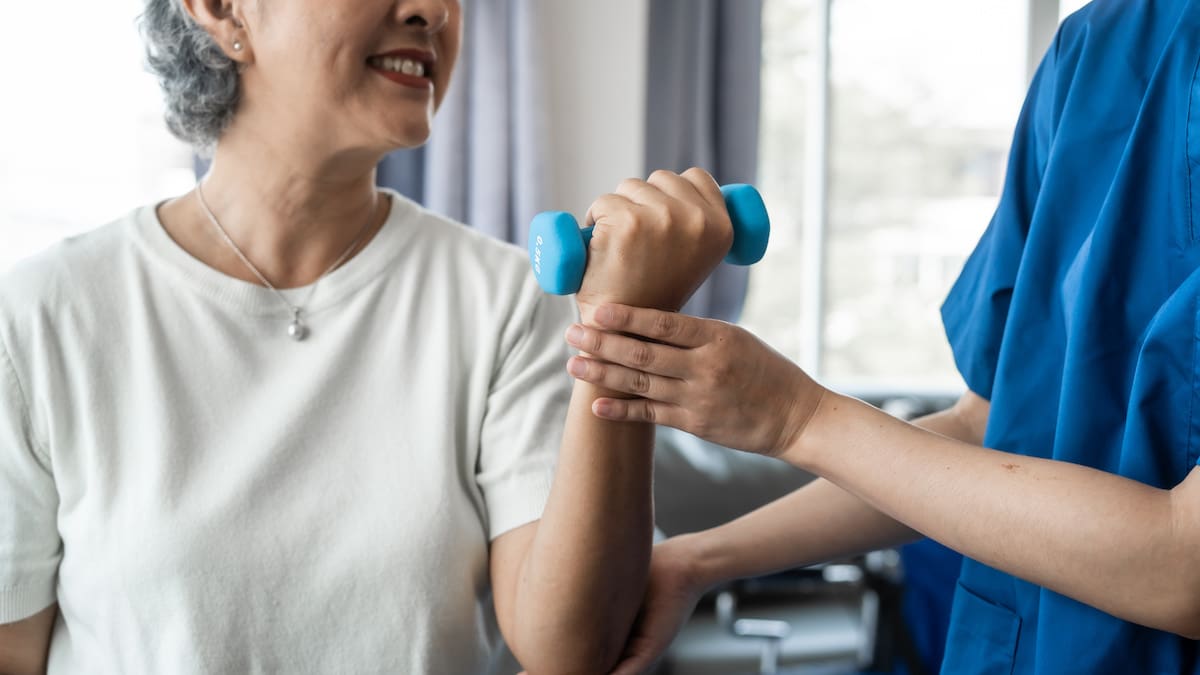Diagnosed osteoporosis requires prescribed treatment to protect bone health. Your medication will be prescribed by a GP or specialist. In Australia there are a range of treatment options available. You and your doctor will determine the best treatment for you, taking into consideration other medical conditions. Your doctor can also advise if your medication is subsidised by the Pharmaceutical Benefits Scheme (PBS).
How do osteoporosis treatments work?
Most medications function by slowing or blocking the activity of bone removing cells (called osteoclasts) while leaving bone forming cells (osteoblasts) at work. This helps improve bone strength over time. Osteoporosis medications are commonly prescribed over many years and must be approved by the Federal Government for use in Australia. It is recommended you take your medication as directed to receive the full benefit. It is also recommend people with diagnosed osteoporosis complement medication use with the recommended calcium, vitamin D and exercise levels.
PBS Subsidies
PBS subsidies apply to
- People who had a fracture due to osteoporosis
- Anyone over 70 years with low bone density
- People with low bone density taking corticosteroids (eg: prednisone or cortisone) at a dose of 7.5 mg for at least 3 months.
Types of medications
The following medications are commonly prescribed in Australia to treat osteoporosis and have strong evidence for reducing risk of fracture.

Related Posts
Other medications
The following medication options can be prescribed based on individual patient needs.
MHT (Menopausal Hormone Therapy)
MHT (formerly known as HRT) helps to slow bone loss, reducing the risk of osteoporosis in women around the time of menopause or after menopause. It is safe and effective for most women under the age of 60 who have osteoporosis and also need hormonal treatment to relieve the symptoms of menopause. It may also be prescribed for women under 60 who are unable to take other osteoporosis medicines. It is particularly useful for women who have undergone early menopause (before 45 years of age).
Selective Oestrogen Receptor Modulators (SERMS)
Raloxifene (brand name Evista)
This medicine is taken daily and acts on bones in a similar way to that of the hormone oestrogen, slowing bone loss and reducing the risk of spinal fractures in women who have been through menopause. The PBS subsidy applies for post-menopausal women who have already had a fracture due to osteoporosis.
Restricted use medication
Teriparatide (Brand name Terrosa) self-administered daily injection for up to 24 months.
This medicine must be prescribed by a specialist and is initiated in people with severe osteoporosis when other osteoporosis medication has not worked. Once the course of the treatment is completed another type osteoporosis medication will be commenced to ensure the new bone formed is maintained. The PBS subsidy is for 18 months for people with very low bone density who have experienced a minimum of two fractures, with one of the fractures occurring whilst on another type of osteoporosis medication.
Romosozumab (brand name Evenity) administered once a month by a doctor with 2 injections (during the same visit), for 12 months.
This medicine must be prescribed by a specialist and is initiated in people with severe osteoporosis when other osteoporosis medication has not worked. Once the course of the treatment is completed another type osteoporosis medication will be commenced to ensure the new bone formed is maintained. The PBS subsidy is for 12 months for people with very low bone density who have experienced a minimum of two fractures, with one of the fractures occurring whilst on another type of osteoporosis medication.
Side effects
Osteoporosis mediation is commonly taken over many years. Side effects from osteoporosis medications are rare and it is recommended you speak to your doctor if you have any concerns or queries regarding your medication. Anyone experiencing a suspected side effect should consult their doctor. Your medication will come with a list of potential side effects if you experience any side effect you will need to inform your doctor.
This article is republished with permission from Healthy Bones Australia.
For help and advice, contact the Healthy Bones Australia helpline: 1800 242 141

